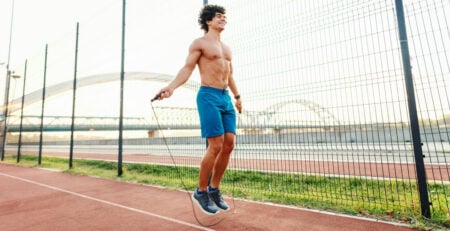Age-Defying Endurance: The Crucial Role of Year-Round Strength and Mobility Training
Strength and mobility training should be maintained throughout the year, especially if we are moving up the age categories. When we were younger it was easy to take for granted what our bodies were able to do and what we were able to do with them, with the minimum of maintenance and care. As we put more mileage on our clocks, and more wear and tear, we need to be more diligent with our maintenance and servicing.
Strength Training – If there is one thing that is common amongst all endurance athletes, no matter what their specific code, it is their concern over their weight. The one notable exception here would be swimmers but I am sure that most of us swim as part of triathlon, where we have to step out of the supportive embrace of water and have to battle gravity as we carry our bodies further in the event. Although amateur athletes are usually less pedantic about their weight, we don’t want to put on any extra kilos that aren’t going to somehow benefit us by making us faster, stronger, or more durable. One of the biggest fears of weight training is that we are going to gain more muscle than we need.
Let’s start by refuting that completely. Firstly, the type of strength training that we, as endurance athletes will do, is not going to pack on any additional muscle. Secondly, the diet that we eat will not encourage building muscle. Thirdly, the amount of endurance training that we do will make it very hard for the body to build muscle. Simply put, we just won’t allow the muscles enough recovery to be able to recover and build on. And finally, the fact that we have chosen endurance sports suggests that our body types are suited to that sort of activity which indicates that we are probably less suited to power sports, which favour a more muscular frame.
Weight Training – Traditional weight training is not our go-to method of strength training. We want to favour compound movements and free weights as much as possible to build our general strength. These will also have the additional bonus of improving the mobility through our major joints. The instinct we have to supress when in the weight room, is our natural, competitive instinct. Both externally and internally. We are not there to try to become better weight lifters. We are there to gain some general strength to make our bodies more durable for the training that we really want to be doing. Compare the effort required for a squat to that of pushing a pedal and we will realise that we really don’t need to go that heavy in order to achieve the gains we are looking for.
Compound movements are those that include a wide number of muscles to achieve. Not only in lifting, pushing or pulling the weight but also in controlling body position, posture and form throughout the lift.
Plyometric Training – Probably a little more fun for us, endurance athletes as it doesn’t require lifting heavy things, which we will never be that impressive at. Plyometrics are performed using our bodyweight, or at the most, light medicine balls, in a more, explosive manner. It is a lot like playing and probably has a more direct influence on our performance in our specialist sports. There will always be a period of adaption that we need to take into account when starting with plyometric training. Especially the eccentric contractions during deceleration, which can cause a lot of micro muscle damage and soreness initially.
Mobility, Flexibility and Stability – In modern times, where we spend a large portion of our daily lives sitting, our primary focus when it comes to mobility, flexibility and stability should be around the hips and lower back. Unrestricted movement through the hips, but also a strong and stable pelvic region are essential for producing force and power when pedalling and running. Swimming also relies on good hip and trunk rotation in the freestyle stroke.
Many of the compound, strength training exercises already discussed will aid and promote a good range of motion through the major joints, including the hips and pelvis and these are a preferred method for improving our mobility and flexibility. Static stretching has fallen out of favour amongst the fitness community, but it still has role to play.
It is not advisable to perform static stretches as part of our warm up for an endurance session. A more dynamic warm up that encourages loosening up of the structures around the joints and mimics the action of the activity to follow are a much better way to prepare for a training session or race. Things like hip and arm rotations are a good example. The best warm up is simply, a light performance of the main activity to follow. So easy running, cycling or swimming. Something that gradually raises the heart rate, gets the blood circulating in the working muscles but that doesn’t provide too much stress too quickly.
Static stretching after activity still has its place. Easing out tight hips after a day in the saddle or a long run is an excellent way to maintain and improve mobility and aid recovery. Remember that we are not trying to become as flexible as gymnasts. Hyper-mobility will actually cause more harm than good. Our primary focus should be on performing these in a calm, gentle, non-competitive manner without overstretching or going as far as discomfort. Stretching should be an almost meditative experience that should leave us calm and relaxed, not more stiff and sore. Identify your problem areas and focus your stretching routine there.






Leave a Reply